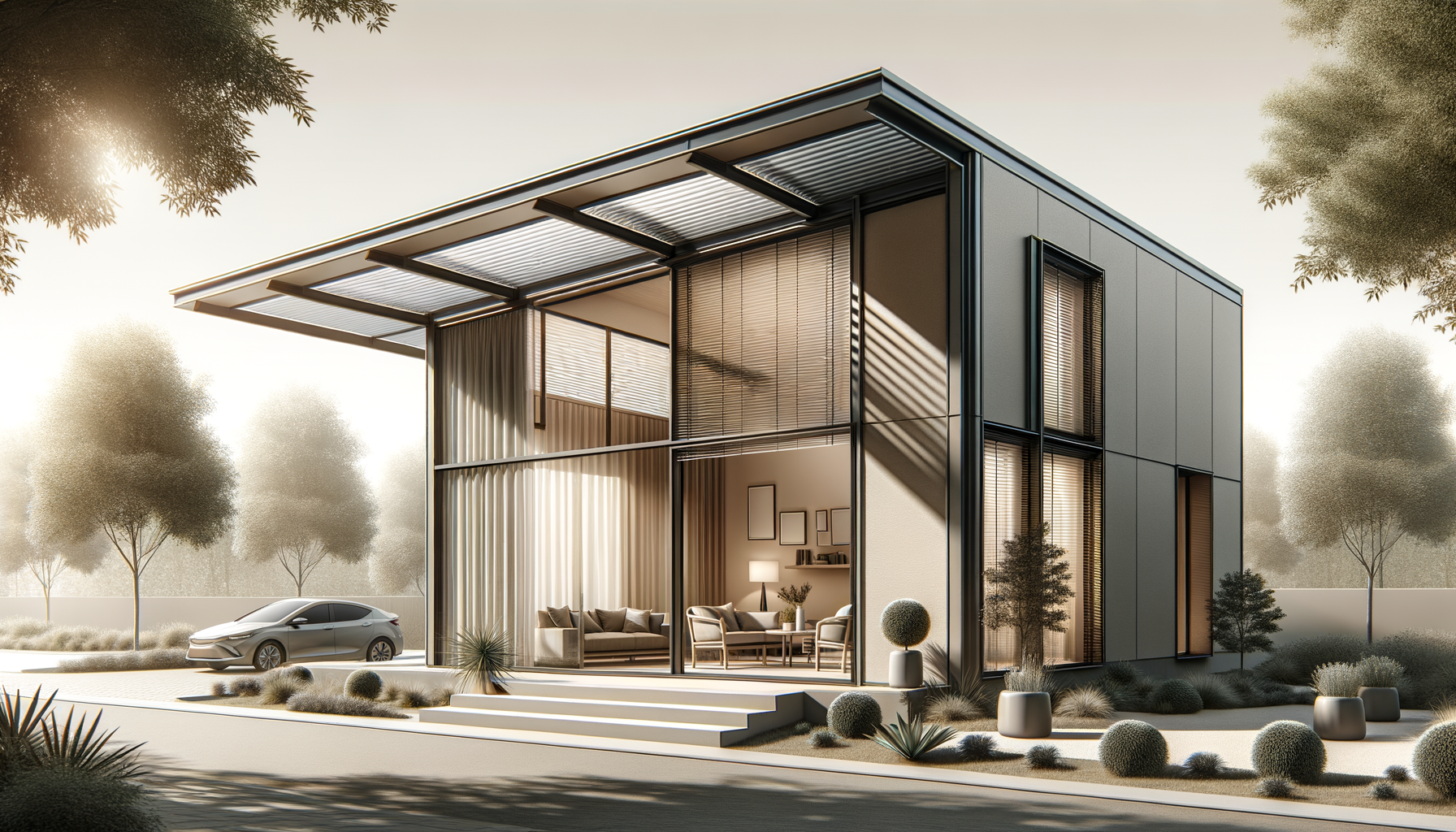
Superior Shade Solutions: Awnings That Offer Energy Efficiency
The Role of Awnings in Energy Efficiency
Awnings have long been valued for their ability to provide shade and protection from the elements. However, their role in enhancing energy efficiency is often overlooked. By shading windows and doors, awnings can significantly reduce the amount of solar heat that enters a home. This reduction in heat gain can lead to a decrease in the need for air conditioning, thereby lowering energy bills. According to the U.S. Department of Energy, awnings can reduce solar heat gain by up to 65% on south-facing windows and 77% on west-facing windows. This makes them a practical solution for homeowners looking to improve energy efficiency.
Moreover, awnings contribute to reducing the urban heat island effect, which is a phenomenon where urban areas experience higher temperatures than their rural surroundings. By providing shade and reducing the need for air conditioning, awnings help decrease the overall energy demand and carbon footprint of a household. This, in turn, contributes to a more sustainable environment. Therefore, investing in energy-efficient awnings is not just a step towards personal savings but also a commitment to environmental responsibility.
Types of Energy Efficient Awnings
When it comes to choosing energy-efficient awnings, homeowners have several options. Each type offers unique benefits and can be tailored to fit specific needs and architectural styles. Some popular types include:
- Retractable Awnings: These awnings can be extended or retracted as needed, allowing for flexible shading options. They are ideal for areas with variable weather conditions.
- Fixed Awnings: Permanently installed, these awnings provide consistent shade and protection. They are often used in commercial settings but can be adapted for residential use.
- Motorized Awnings: Offering convenience, motorized awnings can be operated with a remote control or automated system, making it easy to adjust shading as the sun moves throughout the day.
Each type of awning can be made from various materials, including fabric, metal, and polycarbonate. The choice of material can further influence the awning’s effectiveness in reducing heat gain. For instance, light-colored fabrics reflect more sunlight, while darker colors absorb it. Therefore, selecting the right combination of type and material is crucial for maximizing energy efficiency.
Installation Considerations for Optimal Performance
Proper installation is key to maximizing the energy efficiency of awnings. The orientation of the building, window placement, and local climate conditions all play a role in determining the best installation approach. For instance, in regions with intense afternoon sun, installing awnings on west-facing windows can provide significant energy savings. Similarly, south-facing windows benefit from awnings that block high-angle summer sun while allowing low-angle winter sun to enter, providing warmth during colder months.
In addition to orientation, the projection and angle of the awning are critical factors. An awning that is too short or steep may not provide adequate shade, while one that is too long or flat may obstruct views and natural light. Consulting with a professional installer can ensure that the awning is positioned correctly to provide optimal performance.
Furthermore, maintenance should not be overlooked. Regular cleaning and inspection of awnings can prevent wear and tear, ensuring they continue to function effectively over time. This proactive approach not only extends the lifespan of the awning but also maintains its energy-saving benefits.
Cost-Benefit Analysis of Energy Efficient Awnings
Investing in energy-efficient awnings involves an initial cost, but the long-term savings can be substantial. The reduction in energy bills due to decreased reliance on air conditioning can offset the initial investment over time. Additionally, some regions offer incentives or rebates for energy-efficient home improvements, which can further reduce the overall cost.
The cost of awnings varies based on the type, material, and size. Retractable and motorized awnings tend to be more expensive due to their advanced features, while fixed awnings are generally more affordable. However, the potential savings in energy costs should be factored into the decision-making process. Homeowners can expect a return on investment within a few years, depending on the local climate and energy rates.
Moreover, energy-efficient awnings can enhance property value. Homes with sustainable features are increasingly attractive to buyers who prioritize energy savings and eco-friendly living. Thus, awnings not only provide immediate financial benefits but also contribute to long-term property value.
Environmental Impact and Sustainability
Beyond personal benefits, energy-efficient awnings contribute to broader environmental sustainability. By reducing the need for air conditioning, awnings help lower greenhouse gas emissions associated with energy production. This reduction in energy consumption aligns with global efforts to combat climate change and promote sustainable living.
Additionally, many awning manufacturers prioritize sustainability by using eco-friendly materials and production processes. Some awnings are made from recycled materials or are designed to be recyclable at the end of their lifespan. Choosing such products supports the circular economy and reduces waste.
Furthermore, the use of awnings can encourage a shift towards passive cooling strategies, which rely on natural methods to regulate indoor temperatures. This shift not only reduces energy consumption but also promotes a healthier indoor environment by minimizing the use of artificial cooling systems.
In conclusion, energy-efficient awnings offer a practical solution for homeowners seeking to reduce energy consumption, save on utility bills, and contribute to environmental sustainability. By carefully selecting and installing the right awning, homeowners can enjoy a cooler home and a greener planet.

